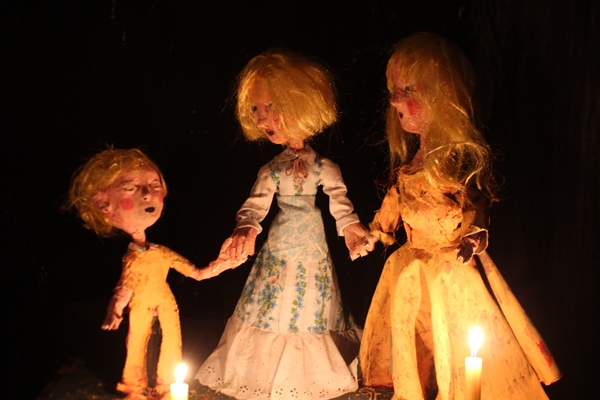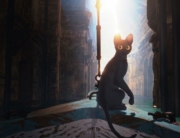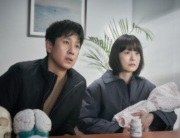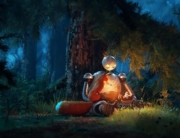
If your idea of fun is creepy, unsettling stop-motion animation with disturbing emotional and political overtones, then The Wolf House is most certainly for you. If it’s not, you may find this 75-minute Chilean film a little taxing.
The story line is muddled (deliberately), but the basic idea centers on a young girl, María, who escapes from a sort of penal colony where she is subjugated to forced labor. This is based on an actual place in Patagonia where German émigrés ran a labor camp to punish, torture, and kill dissidents during the Pinochet regime from the 1970s to 1990. There, María is about to be punished for allowing three pigs to escape. After she manages to flee, she finds shelter in what seems to be an abandoned home where two of the pigs are hiding, and proceeds to play house while hiding from the Wolf, who is somewhere in the woods hunting her down.
After that, well, it’s somewhat hard to tell. The narrative is deliberately untidy and mysterious. The pigs become humans, Ana and Pedrito, mother and child. María alternately dotes on them, warns and threatens them, and mimics how she was treated by the Wolf, her former captor.
The animation consists of moving paintings and paper-mâché and clay stop-motion, among other techniques. As part of the process, characters are built from the ground up, so we see the arduous process of the construction of the characters’ inner frame, then the layering of paper, and finally the painting of the clothes, face, and eyes. Occasionally, an arm will be missing and then created when needed. The guts of the figures are figuratively and sometimes literally exposed and stitched up.
Stillness doesn’t exist in this world. There is constant motion and rearranging of the environment, from paintings on the wall to boards on the floor. All of this is reflective of the trauma that María experiences. In fact, this is the most harrowing depiction of coping with trauma that I’ve seen in quite a while.
The Wolf House has the tone of a Grimm’s fairy tale, including tropes such as cannibalism and transformation to and from animals. María provides voice-over narration in a singsongy voice with occasional interjection from the Wolf, who speaks German. This adds to the overall creepiness of the project.
The Wolf House is a hard watch not only because of its subject matter but because the animation is so dense. There is so much to see in the frame, and since everything, including the background, is moving and transforming all the time, the whole effect becomes a bit mind-numbing. Still, it is a distinctly unique and disturbing movie experience.






Leave A Comment